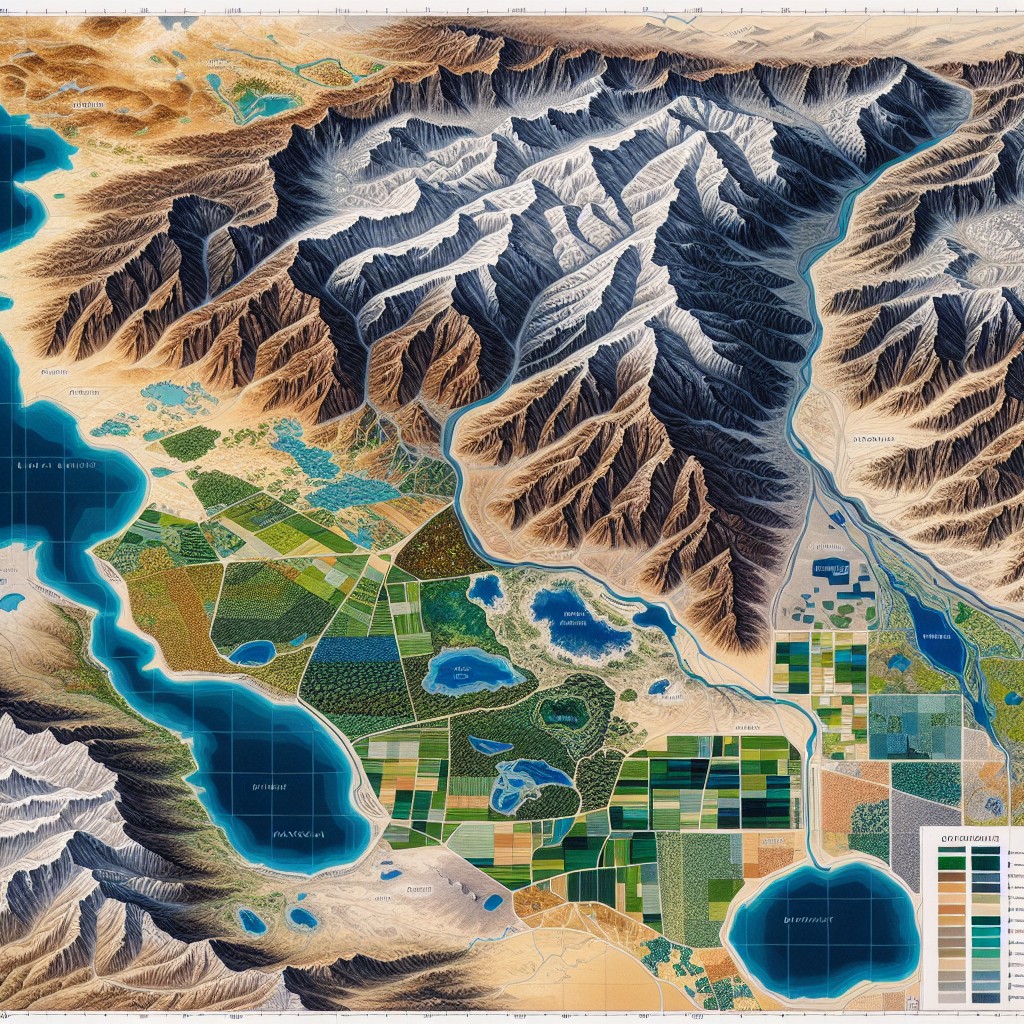Located in North Africa, Libya is a country known for its diverse landscapes, rich history, and vibrant culture. It is bordered by the Mediterranean Sea to the north, Egypt to the east, Sudan to the southeast, Chad and Niger to the south, and Algeria and Tunisia to the west. With a population of over 6 million people, Libya is home to a mix of ethnic groups, including Arabs, Berbers, Tuaregs, and other minority groups.
Libya’s history and culture are of great importance not only to its own people but also to the world. The country has been inhabited since prehistoric times and has been influenced by various civilizations throughout its history. From the indigenous Berber people to the ancient Phoenicians, Greeks, and Romans, as well as Islamic influences and more recent colonial rule, Libya’s heritage is a testament to its rich past.
Summary
- Libya is a diverse country with a rich heritage.
- The Berbers are the indigenous people of Libya.
- Libya has a history of ancient civilizations, including the Phoenicians, Greeks, and Romans.
- Libya has a strong Islamic heritage, with many mosques, madrasas, and tombs.
- Libya has experienced colonial rule under Italy and Britain, as well as a revolution and civil war.
The Berbers: The Indigenous People of Libya
The Berbers are the indigenous people of Libya and have inhabited the region for thousands of years. They have their own distinct culture, language, and traditions that have greatly influenced Libyan society. The Berber language, known as Tamazight, is still spoken by a significant portion of the population.
The Berbers have a rich oral tradition that includes storytelling, poetry, and music. They are known for their craftsmanship in pottery, weaving, and jewelry making. Traditional Berber music and dance are an integral part of Libyan culture and are often performed at weddings, festivals, and other celebrations.
The Ancient Civilizations of Libya: Phoenicians, Greeks, and Romans
Libya has been home to several ancient civilizations that have left their mark on the country’s history and culture. The Phoenicians were one of the earliest civilizations to settle in Libya and established trading posts along the coast. The city of Leptis Magna, founded by the Phoenicians, became a major center of trade and culture in the region.
The Greeks also had a significant presence in Libya, with the city of Cyrene becoming a major Greek colony. The Greeks brought with them their language, architecture, and philosophy, which had a lasting impact on Libyan society. The ruins of Cyrene and other Greek cities can still be visited today, offering a glimpse into the ancient past.
The Romans later conquered Libya and established several cities, including Sabratha and Leptis Magna. These cities flourished under Roman rule and became important centers of trade and culture. The ruins of these ancient cities are now UNESCO World Heritage Sites and attract tourists from around the world.
The Islamic Heritage of Libya: Mosques, Madrasas, and Tombs
| City | Mosques | Madrasas | Tombs |
|---|---|---|---|
| Tripoli | 15 | 5 | 10 |
| Benghazi | 10 | 3 | 8 |
| Misrata | 8 | 2 | 6 |
| Zuwara | 3 | 1 | 4 |
Islam has played a significant role in shaping Libyan culture and society. The spread of Islam in Libya began in the 7th century with the arrival of Arab armies. Mosques, madrasas (Islamic schools), and tombs were built throughout the country, serving as centers of worship, education, and burial.
One of the most important Islamic landmarks in Libya is the Great Mosque of Tripoli, which dates back to the 7th century. It is one of the oldest mosques in North Africa and is known for its beautiful architecture and intricate decorations. Other notable mosques include the Al-Mahdi Mosque in Benghazi and the Sidi Sahab Mosque in Zliten.
Libya is also home to several historic tombs, including the Tomb of Nabi Shu’ayb near Gharyan and the Tomb of Sidi Abd al-Salam al-Asmar in Tripoli. These tombs are considered sacred by Muslims and are visited by pilgrims seeking blessings and spiritual guidance.
The Colonial Era: Libya under Italian and British Rule
In the late 19th and early 20th centuries, Libya came under the control of European powers, first the Italians and then the British. Italy colonized Libya in 1911 and ruled until 1943 when they were defeated by the Allied forces during World War
During this period, Italy implemented policies aimed at assimilating the Libyan population into Italian culture and suppressing their own traditions.

After Italy’s defeat, Libya came under British administration until it gained independence in 1951. The British rule had a different impact on Libyan society, with a focus on modernization and infrastructure development. However, it also led to the displacement of many Libyans from their ancestral lands.
The Libyan Revolution: The Rise of Muammar Gaddafi and the Green Book
Muammar Gaddafi came to power in Libya in 1969 through a military coup, overthrowing King Idris
Gaddafi’s rule was characterized by his ideology of Arab nationalism and socialism, as outlined in his political manifesto, the Green Book. The Green Book became the basis for Gaddafi’s governance and was intended to guide Libya towards a more egalitarian society.
Under Gaddafi’s rule, Libya experienced significant changes in its political, social, and economic landscape. The government nationalized industries, implemented social welfare programs, and invested heavily in infrastructure development. However, Gaddafi’s authoritarian rule and human rights abuses led to widespread discontent among the population.
The Libyan Civil War: The Fall of Gaddafi and the Aftermath
In 2011, a wave of protests swept across Libya as part of the Arab Spring movement. These protests quickly turned into a full-blown civil war, with rebel groups fighting against Gaddafi’s forces. With the support of NATO airstrikes, the rebels eventually overthrew Gaddafi’s regime, leading to his capture and death.
The civil war had a devastating impact on Libyan society and infrastructure. The country descended into chaos, with rival factions vying for power and control. The war also resulted in the displacement of thousands of Libyans and the loss of countless lives.
The Cultural Heritage of Libya: Music, Dance, and Literature
Libyan culture is rich and diverse, with music, dance, and literature playing a significant role in its expression. Traditional Libyan music is characterized by its rhythmic beats and melodic tunes. Instruments such as the oud, darbuka, and violin are commonly used in traditional music performances.
Traditional Libyan dance is often performed at weddings and other celebrations. It is characterized by its energetic movements and vibrant costumes. The Al-Raksa dance is a popular traditional dance form in Libya, known for its fast-paced footwork and intricate choreography.
Libya also has a rich literary tradition, with poets and writers contributing to the country’s cultural heritage. Notable Libyan authors include Ibrahim al-Koni, Hisham Matar, and Ghazi Gheblawi. Their works explore themes of identity, exile, and the human condition.
The Natural Wonders of Libya: From the Sahara Desert to the Mediterranean Coastline
Libya is blessed with diverse natural landscapes that attract tourists from around the world. The Sahara Desert covers much of southern Libya and offers breathtaking views of sand dunes, oases, and rock formations. The Ubari Sand Sea and the Acacus Mountains are popular destinations for desert safaris and camping trips.
On the northern coast, Libya boasts beautiful Mediterranean beaches with crystal-clear waters. Cities such as Tripoli and Benghazi offer a mix of historical sites and modern amenities, making them popular tourist destinations.
The Jebel Akhdar mountain range in eastern Libya is known for its lush green valleys, waterfalls, and ancient cave dwellings. It is a haven for hikers and nature enthusiasts looking to explore the country’s natural beauty.
The Future of Libya: Challenges and Opportunities for a Nation in Transition
Libya faces numerous challenges as it seeks to rebuild and transition to a stable and prosperous nation. The country continues to grapple with political instability, economic hardships, and security concerns. The lack of a unified government and the presence of armed militias pose significant obstacles to progress.
However, Libya also has immense potential for growth and development. Its vast oil reserves, strategic location, and rich cultural heritage can be leveraged to attract investment and promote tourism. The international community has a role to play in supporting Libya’s transition by providing aid, promoting dialogue, and assisting in the rebuilding process.
Libya’s history and culture are a testament to its rich heritage and diverse population. From the indigenous Berber people to the ancient civilizations of the Phoenicians, Greeks, and Romans, as well as Islamic influences and more recent colonial rule, Libya’s past is a tapestry of different cultures and traditions.
Preserving and celebrating Libya’s heritage is crucial for future generations to understand their roots and appreciate the country’s unique identity. Despite the challenges it faces, Libya has the potential to overcome its difficulties and emerge as a thriving nation that embraces its diversity and builds a brighter future.
FAQs
What is Libya?
Libya is a country located in North Africa, bordered by the Mediterranean Sea to the north, Egypt to the east, Sudan to the southeast, Chad and Niger to the south, and Algeria and Tunisia to the west.
What is the capital of Libya?
The capital of Libya is Tripoli.
What is the population of Libya?
As of 2021, the estimated population of Libya is around 6.9 million people.
What is the official language of Libya?
The official language of Libya is Arabic.
What is the currency of Libya?
The currency of Libya is the Libyan dinar.
What is the political situation in Libya?
Libya has been in a state of political turmoil since the overthrow of former dictator Muammar Gaddafi in 2011. Currently, there are two rival governments vying for control of the country, with the internationally recognized Government of National Accord based in Tripoli and the Libyan National Army based in the east.
What is the economy of Libya like?
Libya has a largely oil-based economy, with oil and gas exports accounting for the majority of the country’s GDP. However, the ongoing conflict has severely impacted the country’s economy, with many businesses and industries struggling to operate.


